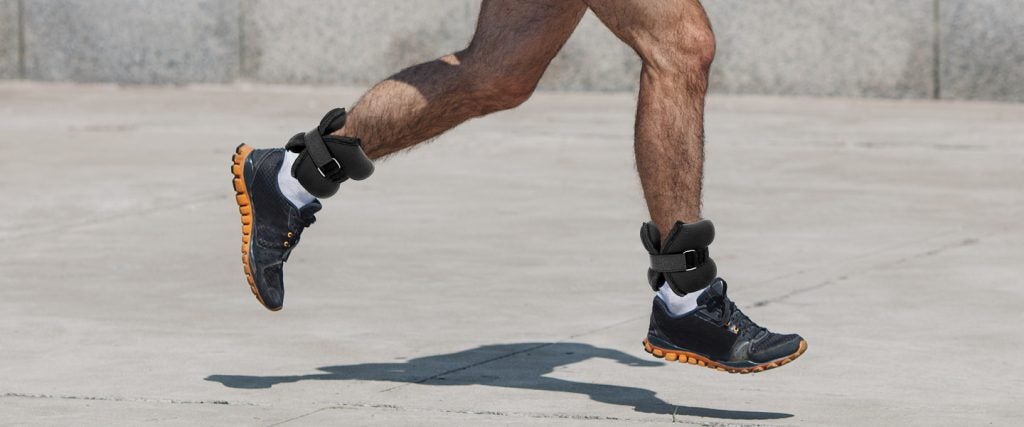The first encounter I ever had with a set of ankle weights irreparably damaged my perception of them. On the day of “The Big Race” at my elementary school — consisting of a distance of what was probably close to 800 meters — the fastest girl in my class wore ankle weights for six hours straight in an effort to make her feet lighter once the proverbial starting gun sounded.
Even as a child, I didn’t understand what she was thinking. She was already the fastest girl in the school; was she just trying to blow everybody out?
Well, the race had a shocking result: She somehow lost in a close race, and I could only surmise that the ankle weights did more to preemptively wipe out her muscles than they ever could have done to help her.
A few years later, I began to notice ankle weights being worn by middle-aged people who participated in walking as their preferred form of exercise, and occasionally by those who performed lower-body-intensive movements in the fitness studios at the gym. As a result, I put ankle weights into two distinct categories: 1) a fitness tool for low-intensity training applications; and 2) perception modifiers for competitive runners to prepare their feet to move more quickly during specified competitive events.
So imagine my surprise when I discovered that many elite athletes have become habitual users of ankle weights as fitness-training tools.
What are the benefits of ankle weights?
Let’s start with the obvious stuff: Adding weight to most movements is synonymous with adding resistance to the movement. For a specific suite of calisthenic movements — usually exercises targeting the glutes and the hips — the leg effectively acts as the source of resistance being lifted against gravity while the hips contract at the peak of the movement. By adding weight to the ankles, a standard leg raise is transformed into a load-bearing, open-chain exercise. This means that the hip and glute muscles targeted by the lift are now working against additional resistance, allowing more muscle to be built in that region, and more rapidly.
Similarly, someone wearing ankle weights could lie in a prone position, bend at the knee and execute hamstring curls while using the ankle weights as resistance. From there, if that same person was to roll over, lie on their back and lift their knees into the air, they could extend at their knees and perform perfectly reasonable leg extensions to target their quads.
In other words, through the correct combination of exercises, ankle weights make it entirely possible to thoroughly train all of the largest muscle groups in the lower body.
What about using ankle weights for other exercises?
Using ankle weights during any cardiovascular exercises that require lifting the entire foot off the ground will make those movements more challenging — even if that’s just walking outside or on a treadmill.
A more strenuous application would be wearing ankle weights while walking up flights of stairs or on a stepmill. The typical exertion on a staircase occurs when you press downward on a step while ascending the stairs, thereby lifting your entire body weight upwards with one leg. By tossing a set of ankle weights into the mix, you’re now adding resistance as well, which brings hip flexion into the exercise, and transforms every component of the stair-climbing motion into a load-bearing movement.
So, yes, ankle weights can take what’s already a torturous exercise like walking up an endless flight of stairs, and make it even more grueling.
Is there anything else I can use ankle weight for?
Absolutely.
Studies have proven ankle weights to be very effective tools for accelerating improvement during rehabilitative or corrective exercises. When utilized to aid stroke victims, ankle weights helped to improve their balance when relearning to walk. In another study, when applied to older adults, the presence of ankle weights enhanced knee joint positioning, thereby refining the walking technique and upgrading the degree of safety.
For individuals without impairments, walking with relatively small amounts of weight on their ankles relative to body mass boosted their average walking velocity by the conclusion of the study.
To be crystal clear, there are certainly ways to accomplish everything you’re hoping to accomplish — from lower body muscle development to enhancing cardiovascular training intensity — without ankle weights. But in the end, my speedy elementary school classmate was right: You can get there a lot faster with them by your side.

